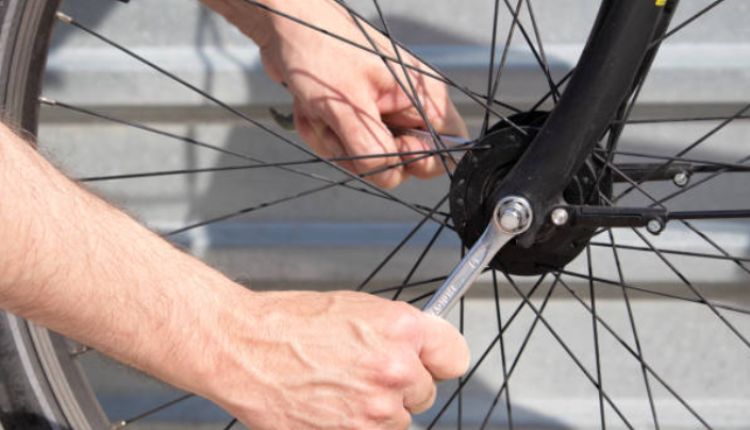Mobility is a fundamental aspect of human life, and for those who rely on wheelchairs, maintaining these devices in good working condition is crucial. Wheelchair repair services play a pivotal role in ensuring that individuals with mobility challenges can continue to lead fulfilling lives.
In this article, we will delve into the ecosystem of wheelchair repair, focusing on the tools, techniques, and professionals involved in keeping these essential mobility aids in excellent shape.
The Importance of Wheelchair Repair Services
Wheelchairs are not just a mode of transportation for individuals with mobility issues; they are also an extension of their independence. A well-maintained wheelchair can be the difference between a life of limitations and one of possibilities. It’s in this context that wheelchair repair services gain their significance.
When a wheelchair breaks down or malfunctions, it can have a profound impact on the user’s life. Simple activities like going to work, visiting friends, or even enjoying the outdoors become challenging. Wheelchair repair services act as a lifeline in such situations, ensuring that users can quickly get back to their daily routines.
Tools of the Trade
Wheelchair repair services are equipped with a variety of tools to address a wide range of issues. These tools enable professionals to diagnose problems and provide effective solutions. Some of the essential tools used in wheelchair repair include:
- Wrenches and Screwdrivers: These basic hand tools are used to tighten loose bolts, screws, and other fasteners. A loose part can compromise the stability and safety of a wheelchair.
- Tire Repair Kits: Wheelchair tires, like those on any other vehicle, can go flat or become damaged. Tire repair kits, which include patches, sealants, and pumps, are crucial for keeping wheelchairs rolling smoothly.
- Spanners: Spanners come in various sizes and are essential for adjusting the tension in the wheelchair’s frame and ensuring it remains rigid and safe.
- Multimeters: Electrical issues can be a common problem in power wheelchairs. Multimeters help in diagnosing electrical problems by measuring voltage, resistance, and continuity.
- Lubricants: Lubricating moving parts such as wheels and axles can prevent friction and reduce wear and tear. This simple maintenance task can extend the life of the wheelchair significantly.
- Spare Parts Inventory: Having a well-stocked inventory of spare parts is vital for wheelchair repair services. This includes components like wheels, bearings, batteries, and control modules. Quick access to spare parts ensures timely repairs.
- Specialized Diagnostic Tools: Power wheelchairs often come with advanced control systems and electronics. Wheelchair repair services may have specialised diagnostic tools to troubleshoot these systems effectively.
Repair Techniques
The techniques used in wheelchair repair vary depending on the type of wheelchair, its design, and the specific issue at hand. Some common repair techniques include:
- Wheel Replacement: Over time, wheelchair wheels can wear out or become damaged. Wheelchair repair services can quickly replace these wheels, ensuring the chair rolls smoothly.
- Battery Replacement: Power wheelchairs rely on batteries for mobility. When the battery’s capacity diminishes, it’s crucial to replace it to maintain full functionality.
- Frame Adjustment: Wheelchair frames can become misaligned, affecting stability and comfort. Professionals can adjust the frame to ensure the user’s safety.
- Electrical Repairs: For power wheelchairs, electrical issues can arise. Repair services can diagnose and fix problems related to the controller, wiring, or other electrical components.
- Custom Modifications: Some users require custom modifications to their wheelchairs to better suit their needs. Wheelchair repair services can accommodate these requests, such as adding specialised seating or control features.
- Routine Maintenance: Regular maintenance, including cleaning, lubrication, and safety checks, is essential to prevent issues from arising in the first place. Repair services can provide routine maintenance to keep wheelchairs in good condition.
Professionals in Wheelchair Repair Services
The individuals who make up the backbone of wheelchair repair services are highly skilled professionals. They are typically trained in the nuances of wheelchair technology and possess a deep understanding of mobility challenges. Some of the key professonals in this field include:
- Wheelchair Technicians: These technicians are the front-line experts responsible for diagnosing issues, conducting repairs, and ensuring that wheelchairs are in optimal working condition. They often have certifications in wheelchair repair and undergo continuous training to stay updated on the latest technologies.
- Occupational Therapists: Occupational therapists work closely with wheelchair users to determine their specific needs and requirements. They provide crucial input in customising wheelchairs to enhance the user’s comfort and mobility.
- Physical Therapists: Physical therapists play a significant role in assessing the user’s physical condition and recommending appropriate adjustments to the wheelchair. They work in tandem with wheelchair technicians to ensure that the user’s mobility aid is tailored to their specific needs.
- Customer Service Representatives: These professionals are the face of the repair service, handling inquiries, scheduling appointments, and providing essential information to users. They ensure a smooth and efficient experience for customers seeking repair services.
- Administrative Staff: Administrative staff manage the day-to-day operations of wheelchair repair services. They handle tasks such as inventory management, billing, and coordinating appointments, ensuring the smooth functioning of the repair centre.
The Role of Technology in Wheelchair Repair Services
Technology has had a profound impact on wheelchair repair services in recent years. With the integration of electronic components in power wheelchairs, repair professionals now require more advanced diagnostic tools and software to identify and resolve issues accurately. Additionally, technology has improved communication and scheduling, making it easier for users to access repair services promptly.
Mobile applications and online platforms have become increasingly common in the wheelchair repair industry. Users can request repairs, track the progress of their service, and communicate with repair professionals through these platforms. This level of accessibility and transparency enhances the overall repair experience.
Furthermore, 3D printing technology is being utilised to create customised parts and accessories for wheelchairs. These innovations allow for a higher degree of personalization and efficiency in repairs and modifications.
Challenges in Wheelchair Repair Services
Despite the vital role they play, wheelchair repair services face several challenges:
- Access to Services: In some regions, access to professional wheelchair repair services may be limited, leaving users in rural or underserved areas at a disadvantage.
- Cost of Repairs: Wheelchair repairs can be costly, especially when it comes to replacing critical components. Not all users have the financial means to cover these expenses, which can be a barrier to accessing essential repairs.
- Rapid Technological Advancements: Power wheelchairs are becoming more sophisticated, which can pose challenges for repair professionals in keeping up with the latest technologies and acquiring the necessary skills and tools.
- Insurance and Coverage: Insurance coverage for wheelchair repairs can vary widely, and not all users have insurance that covers these costs. This can lead to financial burdens for individuals who depend on wheelchairs for mobility.
- Communication Barriers: Some users may face communication barriers due to cognitive or physical impairments, making it challenging to explain their specific repair needs.
Conclusion
Wheelchair repair services are a crucial component of ensuring the mobility and independence of individuals with disabilities. These services encompass a wide array of tools and techniques, all administered by a dedicated team of professionals who understand the importance of these devices in the lives of users.
While challenges exist in terms of accessibility and affordability, the integration of technology and the commitment of professionals in the field have helped bridge some of these gaps. As the industry continues to evolve, we can expect further advancements in both repair techniques and the overall user experience, ensuring that individuals reliant on wheelchairs can lead fulfilling and independent lives. Wheelchair repair services, with their indispensable role, will remain an essential part of this ecosystem, providing vital support to those in need.

